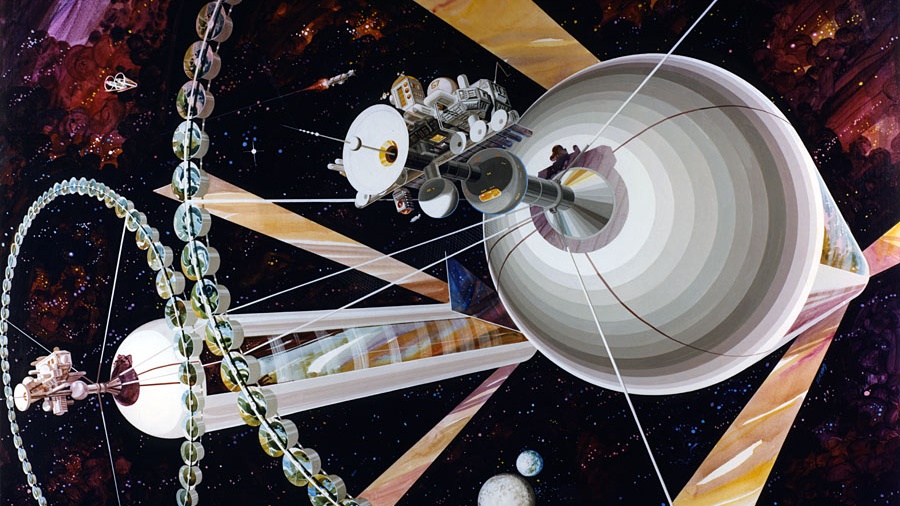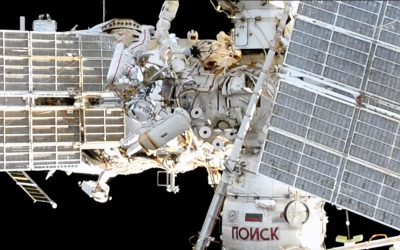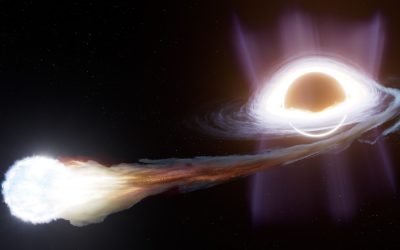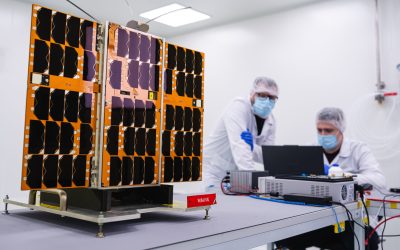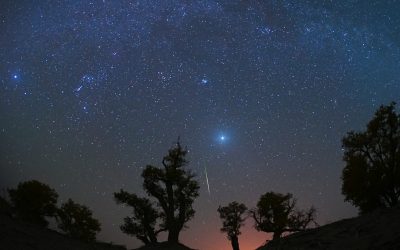A long-held aspiration for humanity’s presence beyond Earth once envisioned vast, self-sustaining cylindrical cities orbiting our planet. These colossal habitats were conceived to house millions, offering their residents a unique perspective as they looked down upon Earth from their elevated cosmic perches.
In the 1970s, Princeton University physics professor Gerard K. O’Neill held a strong conviction that by the present day, human habitation in space would be a widespread reality. His fervent dream of living among the stars propelled him to national prominence for several years, making him a household name. O’Neill frequently appeared on television, authored a best-selling book, and was even invited to testify before the U.S. Congress regarding his ambitious vision for the future.
In 2025, the prospect of widespread human residence in space remains largely theoretical. The reality is that few individuals have lived beyond Earth’s atmosphere, limited primarily to the approximately 290 astronauts who have served on the International Space Station, in addition to a handful stationed on earlier facilities such as Russia’s Mir or China’s Tiangong.
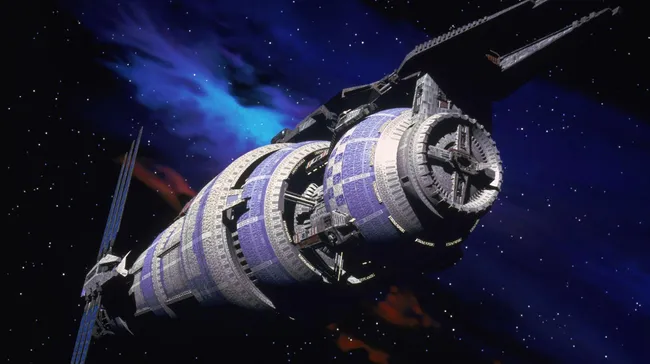
Physicist Gerard K. O’Neill articulated his revolutionary vision for humanity’s expansion into space in his 1976 book, “The High Frontier.” In this seminal work, O’Neill detailed how, as early as 1990 and no later than 2005, colossal self-sustaining cities could be constructed at the gravitationally stable L5 Lagrange point between Earth and the moon. Each of these orbital habitats was envisioned to house several million people. The profound appeal of O’Neill’s concept quickly led to the formation of the L5 Society, a dedicated fan organization that enthusiastically declared its motto: “L5 by ’95!”
A foundational element of these ambitious designs was the innovative use of rotation to generate centrifugal force, thereby mimicking gravity along the interior surfaces of the proposed habitats. O’Neill’s concepts encompassed a variety of forms, including spherical and cylindrical structures, alongside a distinct ring-shaped variant known as the Stanford Torus—a design echoing the wheel-shaped space stations depicted in “2001: A Space Odyssey.”
His most extensive model, “Island Three,” was conceived as a monumental cylinder, projected to be four miles (6.4 kilometers) wide and 20 miles (32 kilometers) long. Inside, its immense interior surface would have provided 500 square miles (1,294 square kilometers) of habitable space, envisioned to contain residential areas, recreational facilities, and natural elements such as rivers and parkland. This detailed description often resonates with science fiction enthusiasts who recognize the interior of the Babylon 5 space station, a fictional construct openly inspired by O’Neill’s work, which similarly employed rotation to simulate gravity.
Life within these conceptual space habitats would be notably pristine. Industrial and agricultural activities would be strategically located in separate, smaller cylinders, situated in close proximity to the main residential areas. Commuting between these distinct cylinders was projected to take mere minutes, utilizing specialized “commuterspheres.” These vehicles would be propelled by electric motors along a cable system, a method O’Neill claimed would cost just 50 cents per passenger, based on 1970s financial valuations.
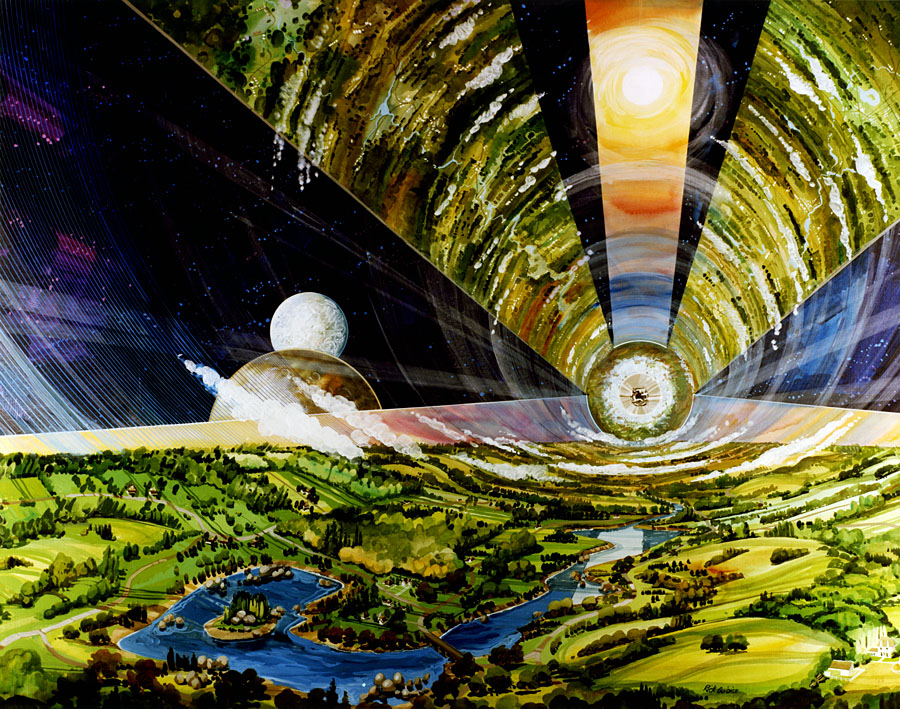
These grand ambitions, following decades of setbacks and waning aspirations in space, may strike many as overly optimistic, even implausible. Yet, O’Neill, far from being a fringe thinker, developed these ideas during a distinct historical period—an era ignited by the immense possibilities of space travel, then recently demonstrated by the groundbreaking achievements of the Apollo program.
A long-time enthusiast of science fiction, O’Neill was naturally familiar with space station concepts. However, the true genesis of his “high frontier” vision occurred in 1969, during his time teaching introductory physics at Princeton. This era, despite the triumphs of the Apollo missions, presented a complex landscape for aspiring scientists and engineers. Mounting disillusionment over the Vietnam War led many to question the worth of a career in science and technology, fearing absorption into the military-industrial complex. Concurrently, a burgeoning environmental consciousness, significantly influenced by texts like Rachel Carson’s “Silent Spring,” was taking hold.
Recognizing the challenge of making his course sufficiently inspiring to transform student mindsets, O’Neill devised innovative engineering problems that integrated economic and social aspects. His initial question to students was: Is a planet’s surface truly the optimal location for a technological society?

O’Neill’s vision, extending beyond mere science fiction, offered a direct counterpoint to contemporary concerns. His concepts, laid out in “The High Frontier,” were partly a response to the Club of Rome’s contentious 1972 report, “Limits to Growth.” That influential study painted a bleak forecast, detailing a future plagued by overpopulation, ecological degradation, and dwindling resources. Its stark conclusion was that the planet’s carrying capacity was being surpassed. One can only speculate on how its original authors might assess Earth’s current predicament.
The report, however, did not escape criticism. Detractors argued it failed to adequately consider how technology might mitigate some of its foretold problems. O’Neill, for instance, specifically questioned the underlying assumption of Earth’s carrying capacity being exceeded, proposing instead that humanity should look to space. He highlighted space’s potential to provide vast access to raw materials, solar power, and living areas, along with offering a suitable location for polluting industries, thus safeguarding Earth’s environment.
Physicist Gerard K. O’Neill contended that the requisite technology for building space habitats was either already developed or on the cusp of realization by the 1970s. In his foundational text, “The High Frontier,” O’Neill outlined how a specific concept, “Island Three,” demonstrated such material efficiency that its construction could realistically commence in the early years of the 21st century.
The majority of essential raw materials are projected to originate from mining operations on the Moon and nearby asteroids. These crucial resources would then be transported for assembly at the L5 orbital point, leveraging a specialized propulsion system known as a “mass driver.”
A mass driver, conceptualized as an electromagnetic slingshot, presents an innovative method for space propulsion. This system would operate by harnessing solar power, utilizing superconductors along a track to generate an electromagnetic field. This field would then efficiently accelerate payloads, propelling them to escape velocity from the surfaces of the moon or asteroids. A key advantage of this design is the elimination of traditional fuel, which would permit a continuous, conveyor-belt-like sequence of launches. Interestingly, while its real-world potential is for transport, mass drivers were depicted in the science fiction series “Babylon 5” as formidable weapons, used to bombard planets with asteroids.
Living in space transcends simply floating in confined modules; a key element for future habitation involves simulating gravity through rotation. Earth-based centrifuge research reveals that humans typically tolerate rotational speeds of one to three revolutions per minute (RPM). Exceeding four RPM, however, demonstrably disorients the inner ear, inducing severe nausea and illness. This crucial limitation on rotational velocity directly informs the essential dimensions of any space habitat engineered to replicate Earth’s gravitational pull.
Achieving stability within an artificial habitat hinges on a design featuring two counter-rotating cylinders joined axially. Furthermore, the meticulous simulation of a day/night cycle is critical; terrestrial life has biologically adapted to this rhythm over four billion years, and its long-term absence would be detrimental to health. O’Neill’s visionary design for each cylinder proposed a six-section division: three windowed areas interleaved with inhabited valleys, all enclosed by hemispherical end caps. To maintain consistent illumination, an external system of movable mirrors would direct sunlight through the windows, creating the illusion of a stationary sun despite the cylinder’s continuous rotation.
Adjusting the angle of mirrors, which would be positioned on cylinders perpetually oriented with their long axis towards the sun, could provide a mechanism to regulate the length of day and the progression of seasonal cycles.
Establishing a functional biosphere within O’Neill’s proposed space habitats presents one of the most formidable challenges to achieving self-sufficiency for future space nations. Crucial to this endeavor is the consistent provision of sunlight. Sustaining populations in the millions demands far more than basic hydroponics; it necessitates a sophisticated life-support system fundamentally reliant on a fully developed soil layer.
The Earth’s own soil layer is the product of millions of years of co-evolution between geological processes and a vast array of life forms, from microorganisms to complex animals, all contributing to its intricate biochemistry. Replicating this complex, living system with its precise biochemical balance within a mere few years is an undertaking of immense difficulty. It would likely require extensive experimental trial and error, a process that would inevitably delay the construction and population of habitats, as developers strive to prevent the catastrophic failure of vital ecosystems.
With precise execution, the interior cylindrical walls, specifically the sections between window openings, could be transformed into expansive parkland. This vision echoes ambitious concepts often depicted in science fiction, drawing parallels to the rotating drum environment of the Babylon 5 space station or the sprawling internal spaces of the Nauvoo/Behemoth from “The Expanse” series.
In “The High Frontier,” O’Neill asserted that the conditions in space could provide an ideal environment for an exceptionally efficient and entirely self-sustaining agricultural system, one that would be impervious to the variability of terrestrial weather or climate.
The enduring puzzle surrounding O’Neill’s ambitious plans for space habitats is pinpointing where the concept ultimately faltered. Intriguingly, there are no physical impossibilities inherent in constructing such colossal environments. O’Neill himself was particularly drawn to the idea precisely because its realization didn’t hinge on fantastical technology, but rather on confronting and overcoming a host of complex engineering challenges.
A key critique leveled against O’Neill’s vision points to an overly optimistic reliance on unproven technology and engineering. While the International Space Station represents the pinnacle of current in-space construction, the advanced systems crucial for concepts like Island Three, or even the simpler prototypes of Island One and Island Two, remain entirely theoretical and undemonstrated today. Developing such capabilities would demand immense dedication, substantial funding, and extensive resources, unfolding over a protracted timeline that cannot be rushed.
Another major challenge emerged from the underperformance of the space shuttle program. Initially conceived with an ambitious target of hundreds of launches per year, the shuttle was intended to build extensive space infrastructure that would support lunar mining or transport millions into orbit. However, this vision largely went unrealized. Between its inaugural flight in 1981 and its final mission in 2011, the six-orbiter fleet collectively completed only 135 space flights.
O’Neill’s financial projections for constructing a 20-mile (32-km) space habitat were admittedly broad, yet he estimated a build-out cost reaching $200 billion in 1970s currency. Inflated to 2025 values, this figure soars to an astonishing $1.1 trillion.
The proposition of space habitats as a remedy for Earth’s overpopulation is met with considerable social concern. Critics argue that even if designed for this purpose, relocating tens of millions of individuals to space would prove largely ineffectual in addressing the planet’s current population exceeding 8 billion. This numerical disparity suggests that off-world settlements offer no significant solution to global demographic pressures.
The prospect of human settlements in space raises a critical question of equity: who will ultimately inhabit these potential sanctuaries, offering an escape from Earth’s deteriorating climate, ongoing conflicts, natural disasters, and pollution? Despite the ambitious visions of pioneers such as Gerard K. O’Neill, historical patterns of urban development and societal stratification suggest that access to space travel and residency will likely be limited to the affluent. While a thriving space city housing millions would undoubtedly require a full complement of essential personnel—including tradespeople, educators, police, administrators, and sanitation engineers—a crucial query remains: even if these vital workers are not personally wealthy, will they predominantly originate from wealthier nations?
The development of space habitats raises concerns that they could deepen the divide between the world’s wealthier and poorer nations. A key question is whether citizens from developing countries would be granted a fair chance to inhabit these extraterrestrial settlements. Indeed, establishing truly fair and equal access to space may prove a more formidable undertaking than the monumental engineering required to design and construct the habitats themselves.
Establishing space habitats offers a critical advantage by providing a potential sanctuary from Earth-based catastrophes, thereby substantially lowering the risk of human extinction. Many experts contend that securing humanity’s long-term survival represents the most compelling rationale for our expansion into space.
Beyond immediate considerations, a more profound, conceptual argument emerges for lamenting the unfulfilled promise of O’Neill’s vision.
The 1970s’ imaginative concepts of space habitats once embodied a vibrant vision of technological prowess and human potential, a forward-looking spirit that appears to have receded in subsequent years. From that hopeful perspective, the 21st century was projected as a distant era of extraordinary technological wonders, boundless hope, and immense prosperity. However, the lived reality of today’s 21st century is instead characterized by widespread war, growing authoritarianism, sectarian conflict, and environmental devastation. This stark divergence prompts a challenging question: Did humanity prove inadequate to the future it imagined, or did the future itself fall short of its promise?

